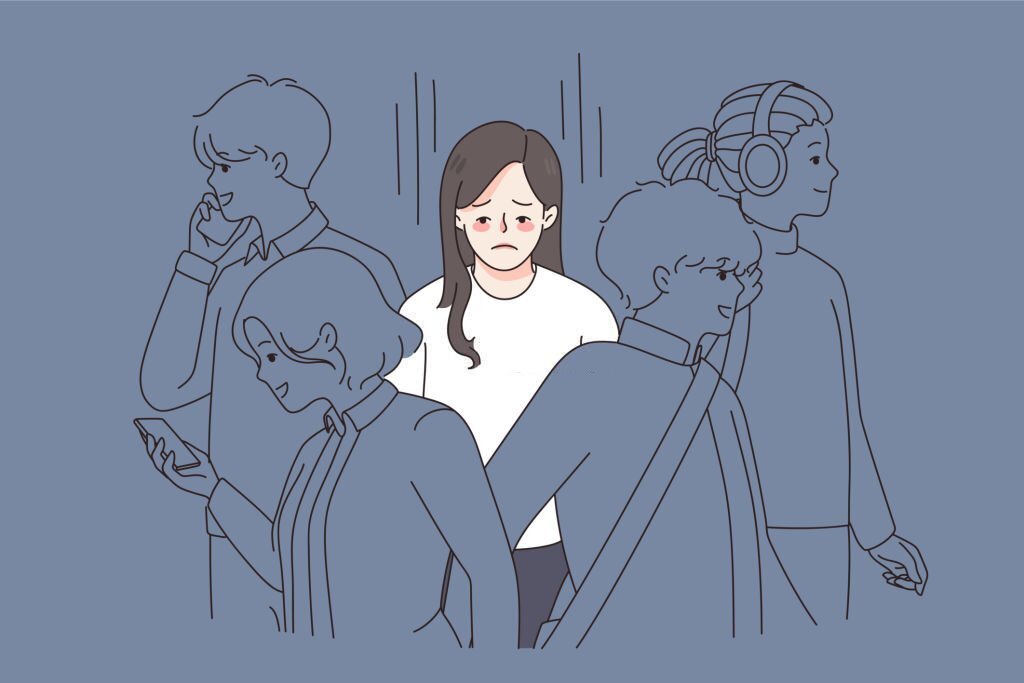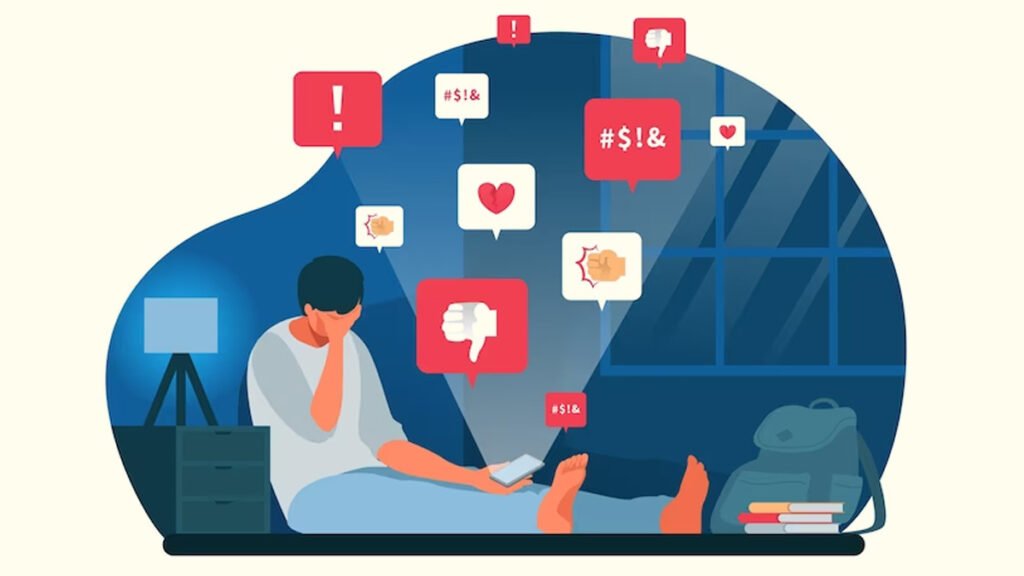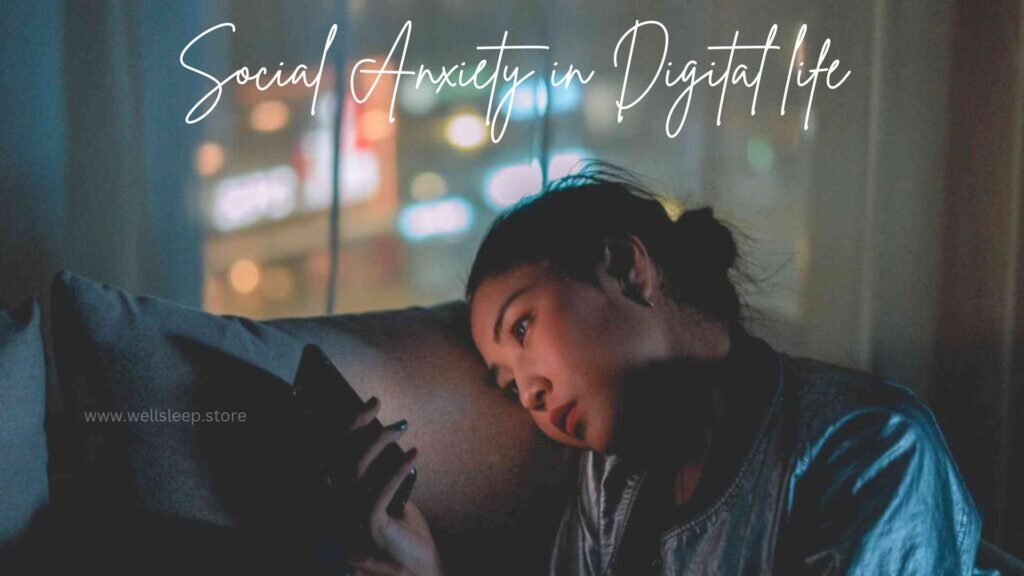Understanding Social Anxiety in the Digital Age: Navigating Real vs. Virtual Social Lives
In the new world where physical boundaries no longer limit interactions, social anxiety no longer applies. The sudden revolution in digital communication has seen so many individuals now face similar feelings of judgment, embarrassment, or inadequacy in the same way as real-life settings. From social networking sites to online meetings, social anxiety in a digital world poses both opportunities and challenges to this condition, blurring the way we handle relationships and our understanding of ourselves.
The world of the digital has opened up new avenues for connection, but it has also intensified the pressure to put on a certain face or present ourselves in the world in a particular way. And thus begins a battle between our true selves and our virtual selves. Constantly juggling between two perceived pressures of in-person social needs and imaginary online personas, individuals with social anxiety find this behavior to be overwhelmingly stressful to perform. This blog explores how social anxiety manifests in the digital age and offers insights into how we can manage the complexities of both our real-world and online social lives.
What is Social Anxiety?
Social anxiety, also referred to as social anxiety disorder (SAD), is a mental health condition characterized by an intense fear of being judged, embarrassed, or criticized in social situations. It goes beyond feeling shy or nervous; it’s a persistent, overwhelming sense of discomfort that can significantly impact an individual’s ability to interact with others, participate in group activities, or even engage in everyday social interactions.
People with social anxiety worry excessively about being scrutinized or humiliated in public or private settings. This fear can manifest in various ways, such as avoiding social gatherings, feeling self-conscious when speaking to others, or experiencing physical symptoms like sweating, trembling, or a racing heart during social encounters. In some cases, the anxiety can be so severe that it leads to social isolation, affecting relationships, career opportunities, and overall well-being.
The underlying cause of social anxiety, including its interactions with genetic, environmental, and psychological characteristics, can be complex. It may emerge from past situations involving negative experiences related to being bullied or rejected in social environments or may result from a family history of anxiety disorders. Regardless of the causative factors, social anxiety can be debilitating; however, the right support and treatment can overcome it.

Social Anxiety in Cyberspace: From Real to Virtual Interaction
Staying in touch is easy, without the pressures of social contact, in the digital world. Everything from social media and messaging to video calls and online gaming has become part of our lives. This convenience with communication brings with it new pressures on someone carrying the label of social anxiety.
1. The Quest for the Perfect Online Image
Social media presents these idealized aspects of people’s lives, comparing and causing those with social anxiety to doubt their own. For those with a lot of inadequacy because of social anxiety, the photoshopped or filtered images add to this aspect. Most sufferers of social anxiety feel that no matter how well they are trying, they never live up to the ideal created by others, which in return increases isolation and self-criticism.
To some, this creates anxiety over being able to portray a flawless online version of themselves, overthinking posts, worrying about others’ reactions, or feeling anxious over how others are perceiving them.
2. Dread of Judging in Online Communication
Although online communication eliminates some face-to-face cues, it doesn’t take away the fear of judgment. People with social anxiety may worry about the tone of their words being misinterpreted in text messages, direct messages, and comments. Without the non-verbal cues of body language, it’s easy to misread intentions, which can exacerbate feelings of discomfort or insecurity.
For instance, someone might spend hours drafting the perfect reply to a simple text or become anxious about sending a message without receiving an immediate response. The lack of instant feedback can make them question their social standing or create a sense of isolation.
3. Video Calls and The Pressure of Looking “Just Right”
Video calls have become an everyday thing for both professional and personal use. They are definitely more personal than a text or a phone call, but may be a great source of stress for those suffering from social anxiety. The thought of being in front of a camera, with the fear of how one appears, or worse, that all eyes are upon them, makes one sweat, increases heartbeats, and causes one’s hands to shake.
This is also accompanied by the pressure to keep one’s eyes glued to the screen or remain engaged in conversation through the camera. It can be too much of a scrutiny, even if it’s self-imposed, and can make it impossible to enjoy such virtual interactions.
4. Online Gaming and Social Anxiety
Online gaming communities are another avenue where people suffering from social anxiety are challenged yet empowered. While multiplayer games would require teamwork and communication, internet anonymity provides the barrier that gives players the ease to engage themselves more freely; however, someone with social anxiety may fear the judgment of the teammates or might not be able to contribute significantly, which brings about intense stress and detracts from the joy of playing the game.
In some instances, the gaming community can serve as a haven for those who have social anxiety, providing a place to experience social interaction in which the stakes are perceived as being lower. However, if not handled appropriately, these places can also fuel feelings of isolation, especially when the individual has difficulty communicating or relies too heavily on the virtual world for social interaction.

The Real-World Effects of Digital Social Anxiety
In navigating the complexities of digital and real-world social lives, it’s easy to forget how anxiety can impact well-being. Social anxiety, whether in person or online, can contribute to :
a. Increased loneliness: Being unable to participate in social situations in person or online can create feelings of isolation and loneliness.
b. Avoidance behaviors: People might shy away from social life completely, both in the physical and digital worlds. As time passes, this can restrict the possibilities of personal development and quality relationships.
c. Physical signs: Anxiety tends to manifest itself in the body: headaches, gastrointestinal problems, sleep disorders. Such symptoms might either intensify or persist unless the problem is treated.

Strategies for Managing it in the Digital Age
Managing social anxiety in the digital age requires a multi-faceted approach that balances real and virtual interactions. Here are some strategies that can help:
a. Set Boundaries for Digital Engagement : It’s essential to establish boundaries when it comes to digital communication. Limiting time on social media, avoiding compulsive checking of messages, and practicing digital detoxes can reduce stress and allow for healthier engagement.
b. Mindfulness and Grounding Practice : Regardless of whether it’s a virtual meeting or in person, mindfulness practice such as deep breathing and grounding will help regulate the body’s physiological response to anxiety. Such exercises can be useful even right before a video call or even during a group chat.
c. Embrace Imperfection: That’s the thing about managing a virtual persona. Embracing imperfection is one of the best ways to alleviate the pressure. It means allowing yourself to post imperfect photos or take part in casual, unscripted conversations. The more authentic we are in digital spaces, the less pressure we place on ourselves to “perform” in front of others.
d. Start Small and Build Confidence : When it comes to digital spaces, try starting with smaller, lower-stakes interactions. This might mean commenting on a friend’s post or sending a quick message to a family member. Building confidence in these smaller actions can reduce anxiety when engaging in more significant conversations.
e. Seek Professional Help : Therapy in general, and cognitive behavioral therapy (CBT) in specific, can be effective for treating both social anxiety and the online version. A therapist can assist their patients in unearthing underlying causes of anxiety, teach them strategies for coping, and work out any problems that might arise with relations in cyberspace.
Conclusion
We must carefully consider social anxiety in the digital age by balancing how technology mitigates and accentuates our fears of social judgment. It is rather challenging to tread this new landscape, but then again, all our virtual actions do not need to define us or dictate who we are. Setting boundaries, embracing imperfection, and seeking support when needed will allow us to balance our digital and real-world social lives in a healthier and more manageable way.
Ultimately, it is the understanding and addressing of social anxiety, whether in person or online, that will help us regain control over our social experiences and move toward a more fulfilling and balanced life.

